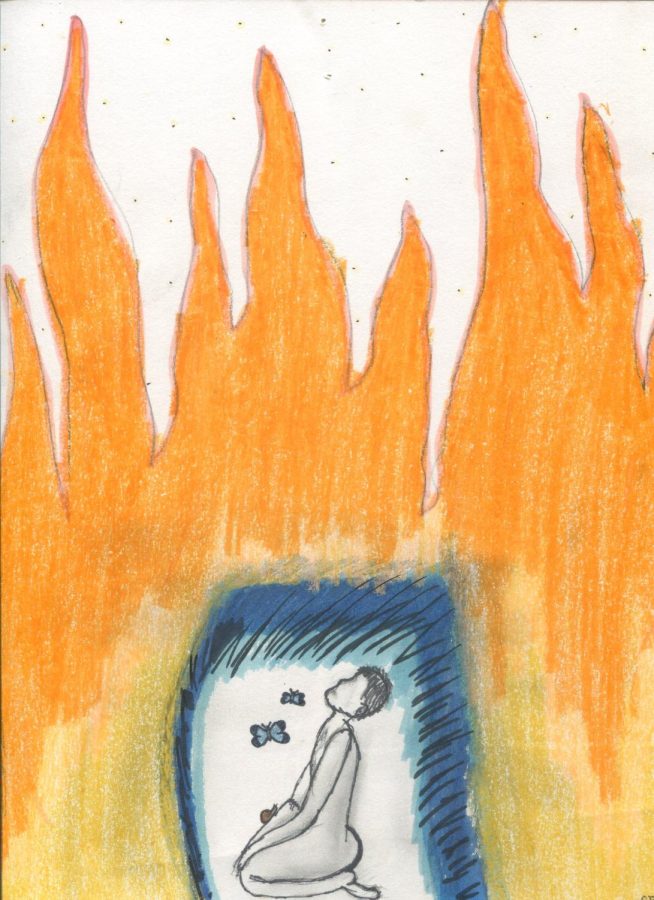Technology is Responsible for Generation Z’s Emotional Discourse
An unprecedented number of teenagers are dealing with mental health issues in a world dominated by technology.
art by Carter Van Zanten depicts the intensities of social media overwhelming a member of Generation-Z.
October 6, 2022
Generation-Z is being raised in a new dawn of time where a cell phone lives in nearly every American teenager’s pocket. Modern technology provides immediate access to thousands of news sources, something never seen before.
“Today with 24-hour news and information in our pockets on our smartphones, I think we just don’t see really serious things as serious anymore,” said AP European History teacher Rob Lynde.
Today’s generation is constantly digesting new information. According to the The American Academy of Pediatrics (AAP), America’s teenagers spend around six and a half hours engaging in entertainment media daily.
News stimulates the brain and produces an emotional response to the material, and repeated stimulus can lead to desensitization: a diminished reaction.
“Extensive research evidence indicates that media violence can contribute to aggressive behavior, desensitization to violence, nightmares, and fear of being harmed,” said AAP.
“Last year I saw kids who were highly addicted to their phones and they could not go very long without looking at their phones. It was a big problem. I think it desensitizes them to their environment around them,” said Lynde.
Despite negative effects, teenagers still rely on their phones excessively.
Each year, CUSD students undergo two lockdown drills. During the most recent drill this year, a student in class asked, “What do we do if an intruder comes into our room?” When the teacher responded, “Throw things at them,” the entire room burst into laughter.
Over the course of our entire lives, Generation-Z has participated in drills in response to the dozens of school shootings reported in the media each year. The threat of a school shooting brings students to laugh at the idea of having to defend themselves from a shooter on campus.
The effect of this issue reaches farther than dark humor. “The total number of teenagers who recently experienced depression increased 59% between 2007 and 2017,” said Pew Research Center.
So, what’s the difference between teenagers in 2007 and teenagers in more recent years? Engagement in social media has become much more rampant and diverse, likely due to the creation of Instagram in 2010, Snapchat in 2011, and TikTok in 2016.
No one wants to blame technology. In recent decades, society has been structured to function in unison with the vast technological systems that have been created. Although communication, employment, education, and entertainment all rely upon electronics, overexposure to technology is destroying Gen-Z.
Think before you scroll.



